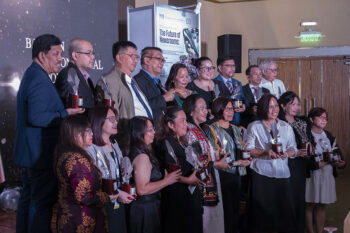DAVAO CITY (MindaNews / 14 Nov) — Mindanao will need additional P350 billion worth of investments to improve education, health, and infrastructure systems, having been left out for decades in terms of development, Karl Kendrick Chua, senior country economist of the World Bank in the Philippines and team leader of the study, Mindanao Jobs Report (MJR) said during the presentation of preliminary results last Friday at the Seda Hotel here.
“We are thinking that for Mindanao to be able to become upper-middle class region where Thailand is, where Indonesia is headed, and China is, we need to spend additional P350 billion per year to the current budget, and that will mean significant ramping up of infrastructure in agriculture, public roads, irrigation, and farm-to-market road. That means improving the public education system and improving the health system,” Chua told reporters.
Chua clarified though that the amount can be shared investments by the local and national governments, and the private sector.
“This is the amount that we need to build better roads, improve education, and the health system, so that over the medium term, Mindanao can develop, grow faster and create better jobs,” he said.
He added that lack of new infrastructure, most especially farm-to-markets roads, discourages new developments and investments from coming in and bringing positive impact on employment generation.
He explained that agriculture, from where poor farmers draw their incomes, remains to be Mindanao’s comparative advantage.
In his presentation, Chua said that 89 percent of the farmers are either on subsistence or near subsistence, which means majority of the “poor farmers are too poor to afford not working” while only 11 percent of them have marketable surplus.
While manufacturing might play a significant role in urbanizing the island, he said “it may need to step back a little because the poor and uneducated farmers might not land jobs in the industry.” He said there is a need for Mindanao to improve the public education system to increase their marketability.
“It seems to be that (agriculture) remains to be the comparative advantage of Mindanao but if you jump to manufacturing, especially high capital like steel and services, you leave out the Mindanawons who are poor and uneducated. They will not get jobs,” he said.
The MJR report was started in January 2015 and will be completed in July 2016, just in time for the new administration to come into power.
The WB study is being eyed as the guideline to map out better plans for the growth and development of Mindanao, he said. (Antonio L. Colina IV / MindaNews)
